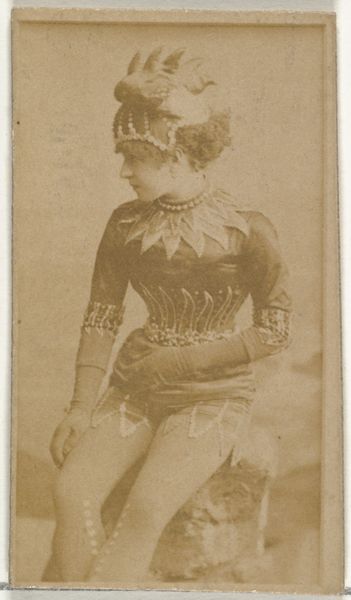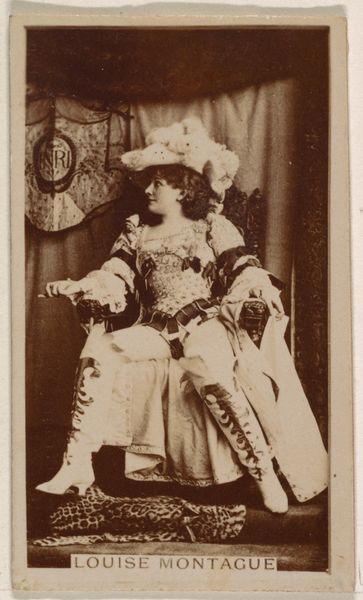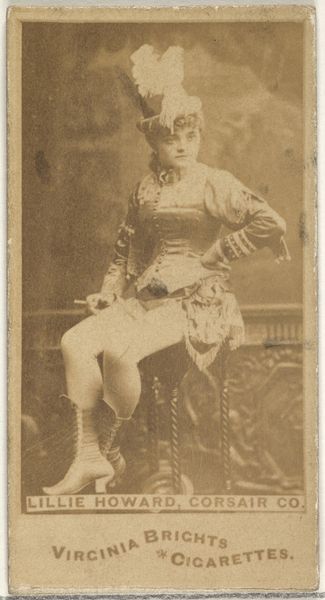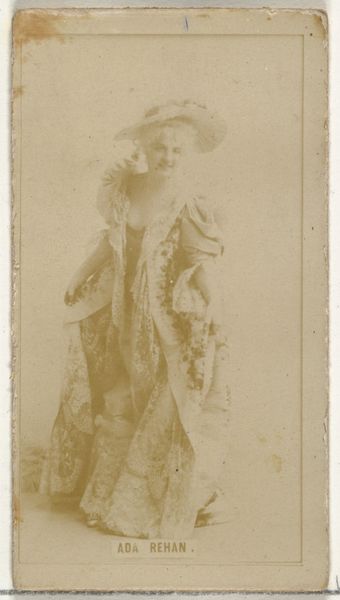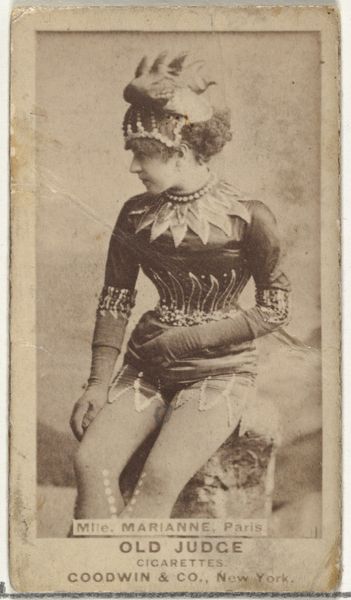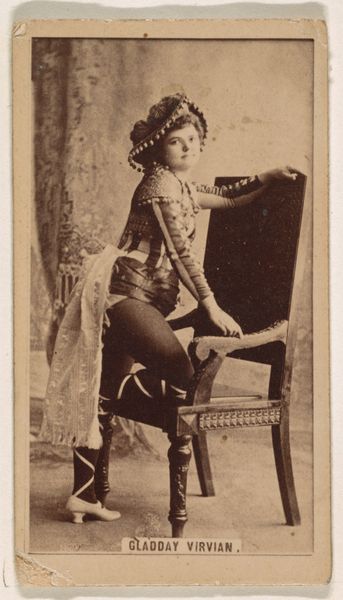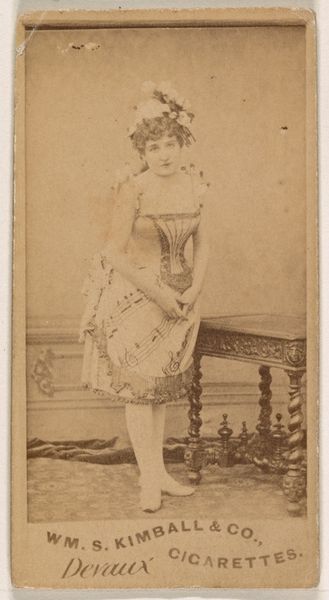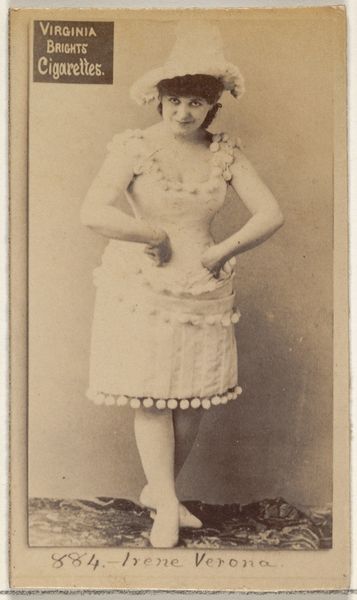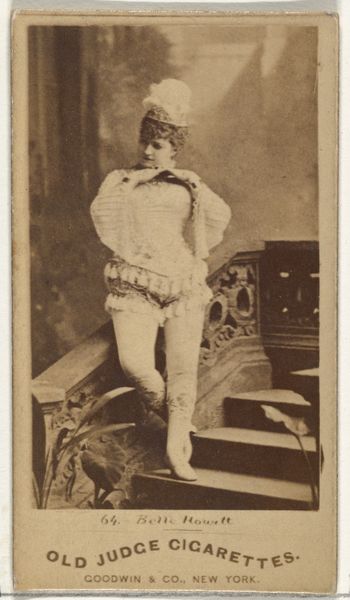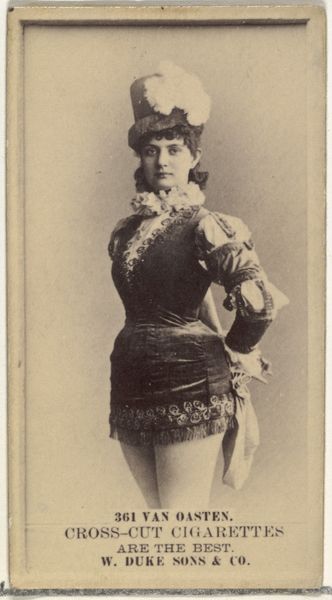
Mlle. Guyon, Paris, from the Actors and Actresses series (N45, Type 1) for Virginia Brights Cigarettes 1885 - 1891
0:00
0:00
drawing, print, photography
#
portrait
#
drawing
# print
#
figuration
#
photography
Dimensions: Sheet: 2 3/4 x 1 3/8 in. (7 x 3.5 cm)
Copyright: Public Domain
Editor: This is an advertisement card dating from 1885 to 1891, part of the Actors and Actresses series by Allen & Ginter. It depicts Mlle. Guyon of Paris. It's fascinating how popular figures were used to sell cigarettes! How do you interpret the implications of commercializing celebrity images like this in that era? Curator: The commodification of Mlle. Guyon’s image, and those of other performers, through cigarette cards reflects a significant shift in the relationship between celebrity, gender, and consumer culture. It underscores how female performers were increasingly packaged and sold as desirable objects. How do you see this act of turning a performer's image into a marketing tool relating to broader social power structures and gender roles? Editor: I guess it feels like women's worth became tied to their visibility and marketability. Was there any pushback at the time, or was it widely accepted? Curator: There was indeed a burgeoning conversation at the time about the morality and implications of using women's images this way, particularly within feminist and social reform movements. This imagery simultaneously offered women a platform but also reinforced patriarchal control over their representation. Consider how this card, ostensibly a harmless promotional item, also participates in complex systems of power, influencing public perceptions of women and labor. Where might we find echoes of this phenomenon today? Editor: It's wild to see the roots of influencer culture in something like a cigarette card! The object seems almost benign on the surface, but when we examine its historical context, the nuances of power and representation really come into focus. Curator: Precisely. By engaging with both art history and contemporary critical theory, we see these images as active participants in cultural conversations that still resonate. It encourages us to critically analyze how visual culture reinforces and subverts social norms. Editor: This really emphasizes how crucial context is to understanding visual material; without it, it's so easy to miss the larger picture. Thank you. Curator: Absolutely. This dialogue helps to contextualize seemingly straightforward art objects within much larger socio-historical frameworks.
Comments
No comments
Be the first to comment and join the conversation on the ultimate creative platform.
